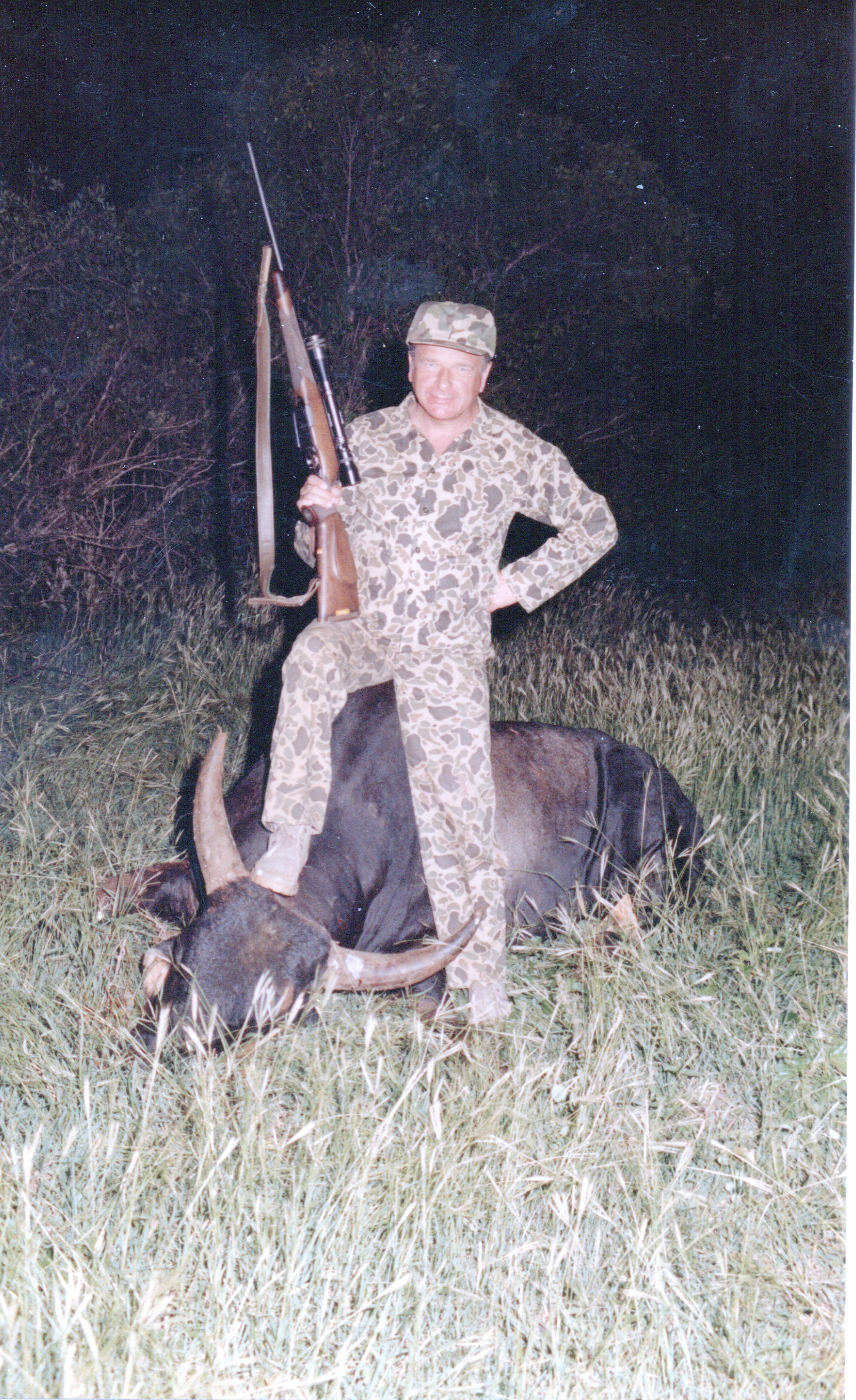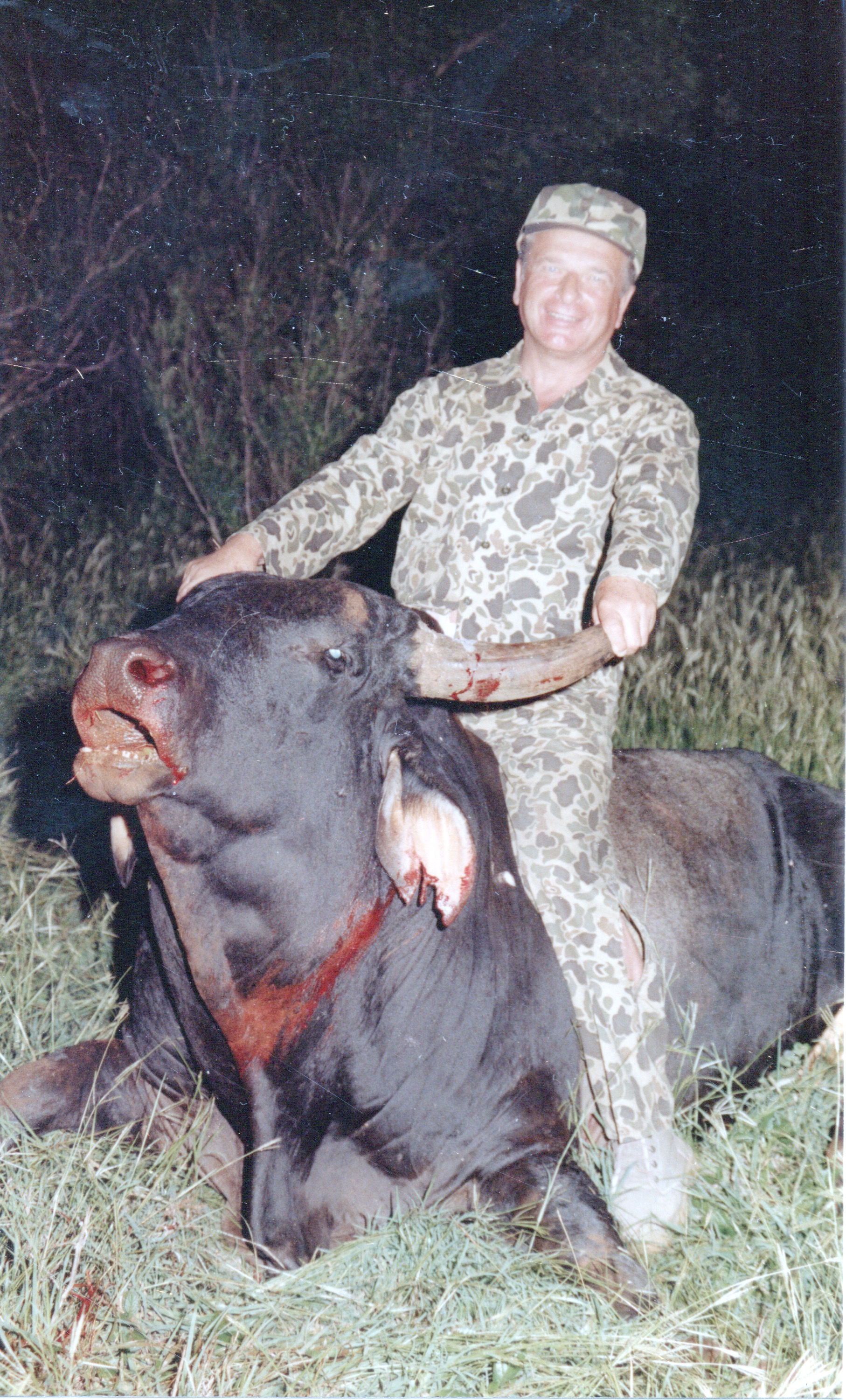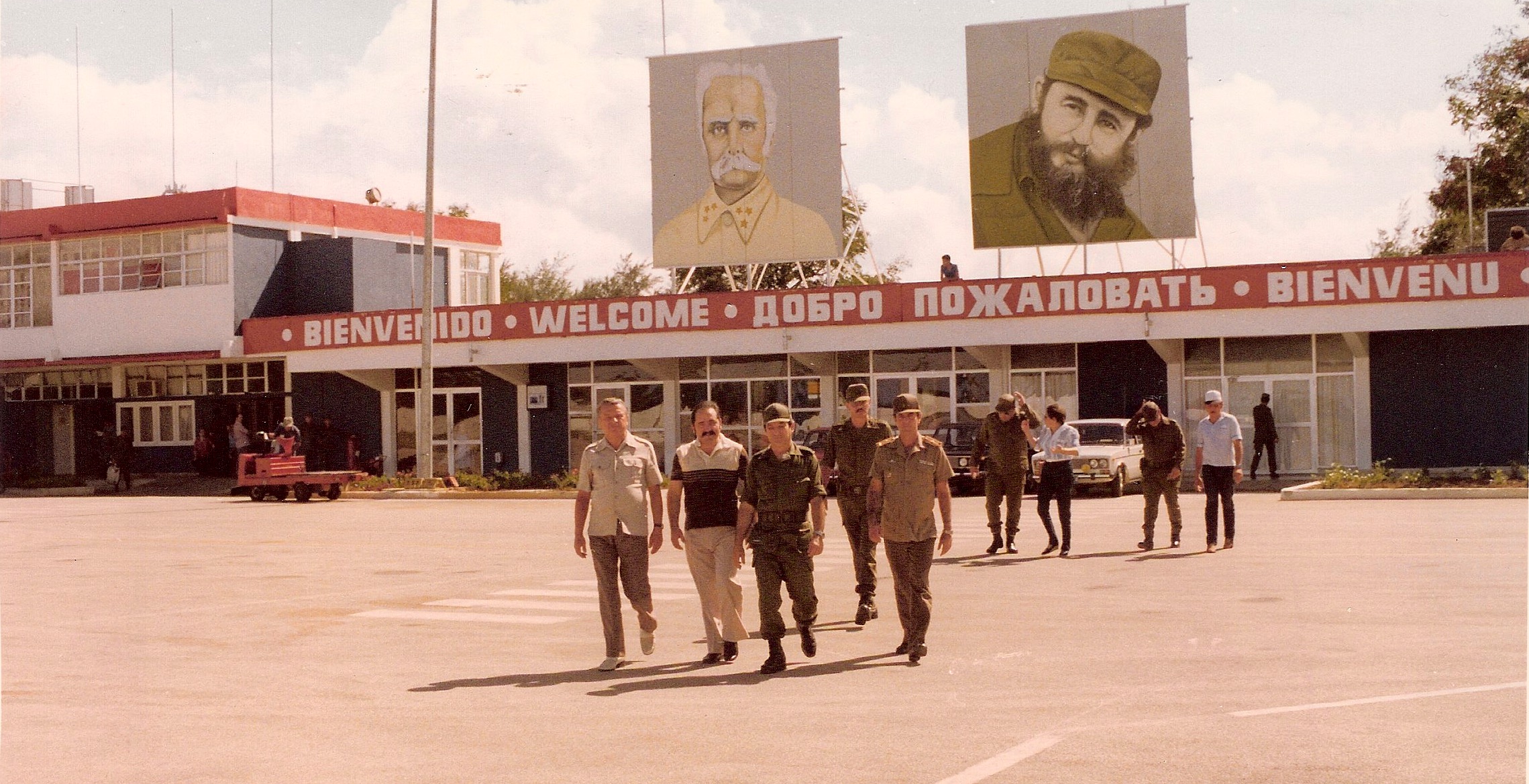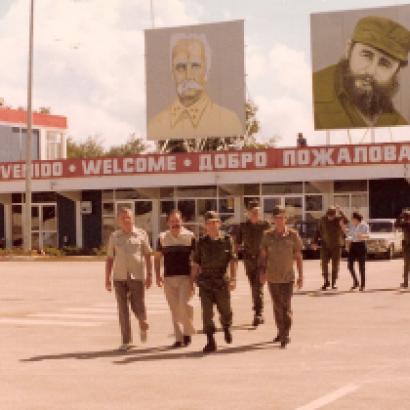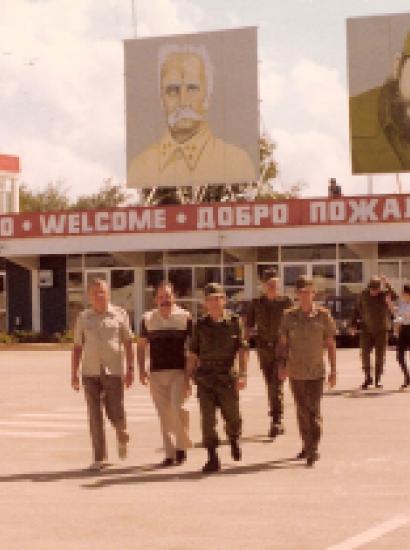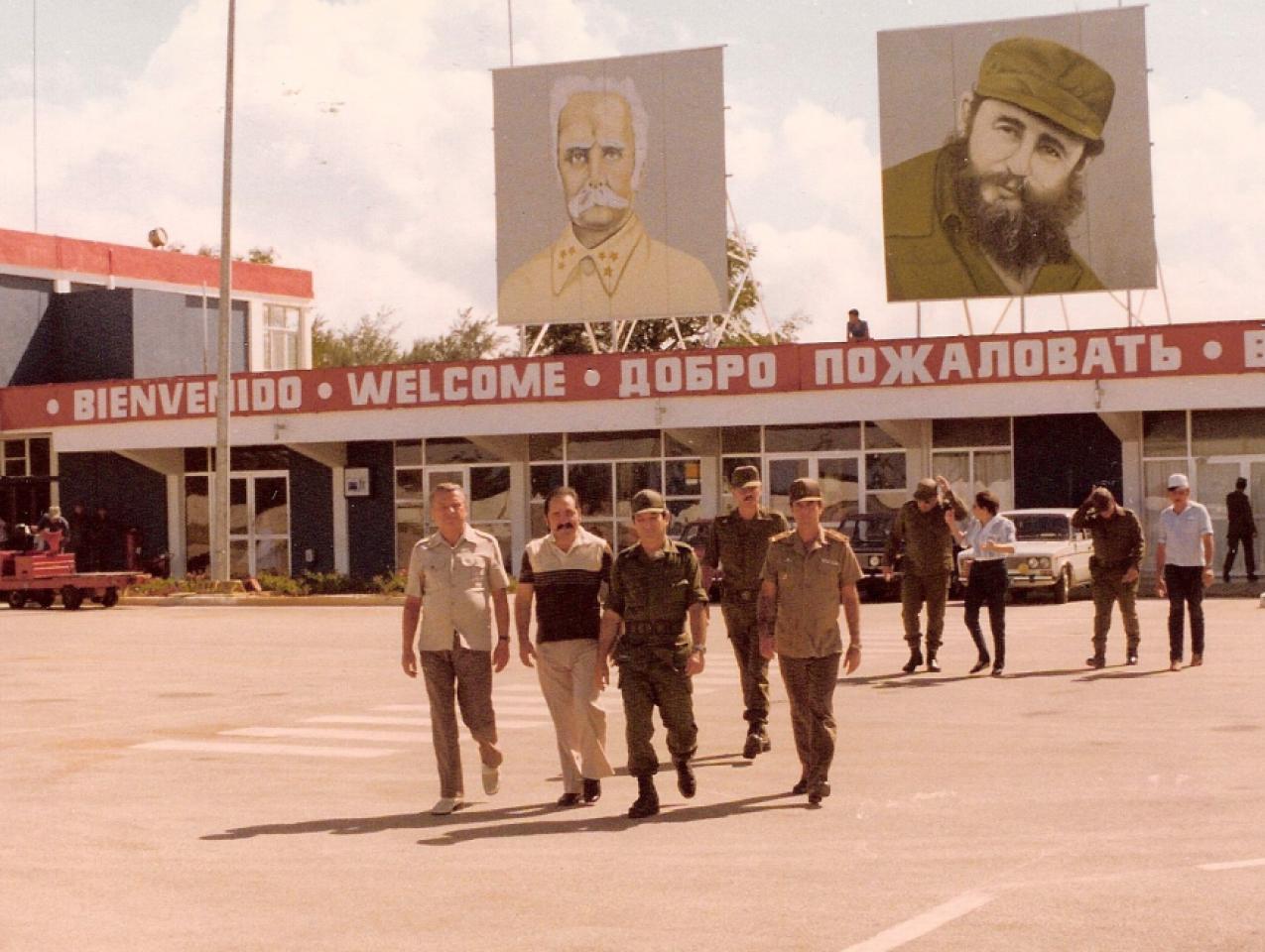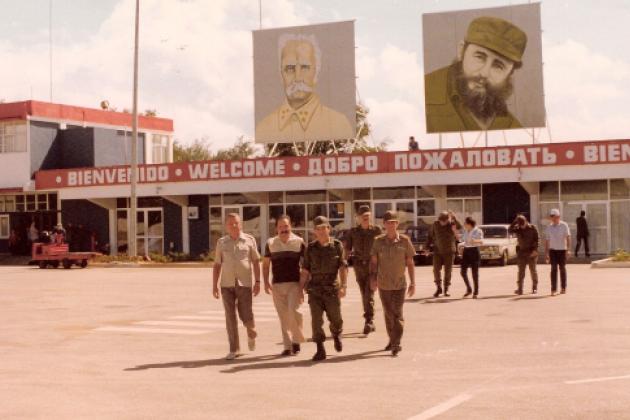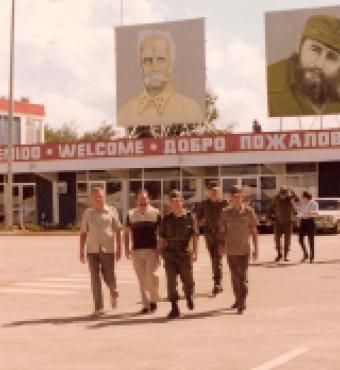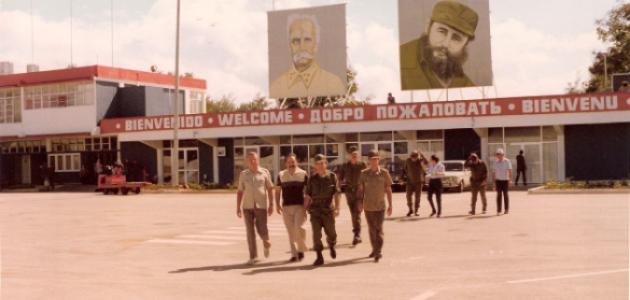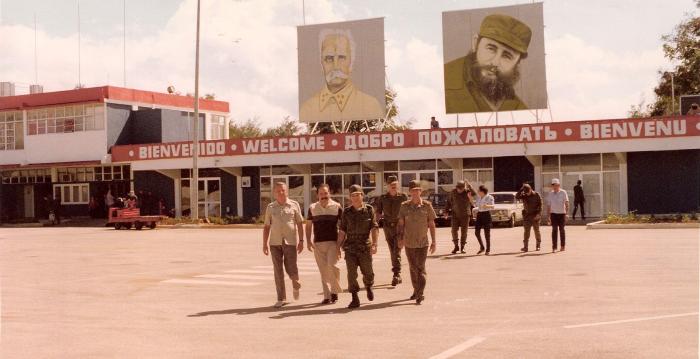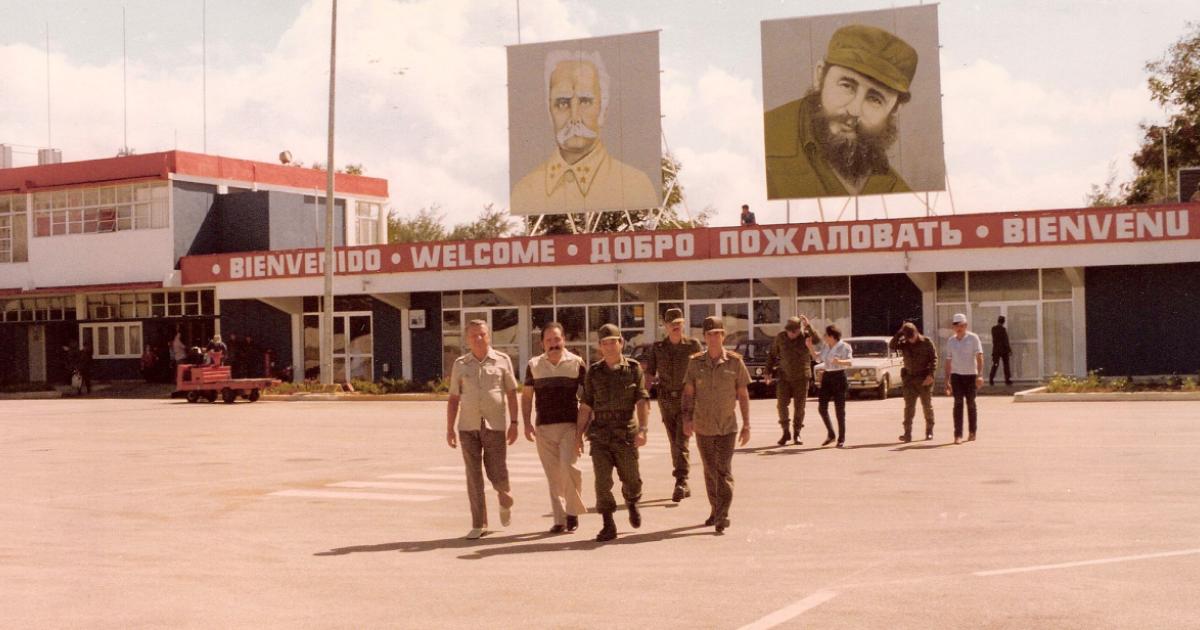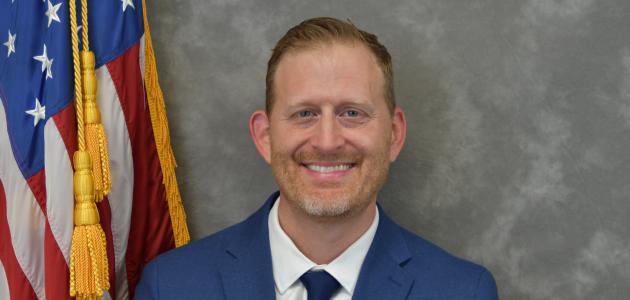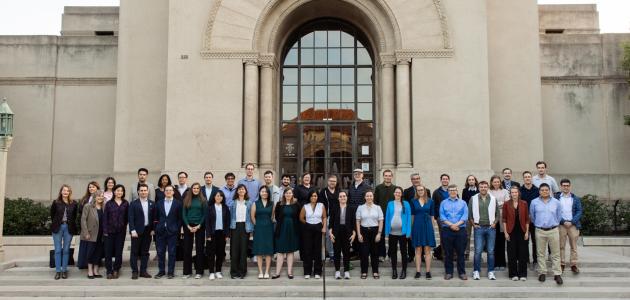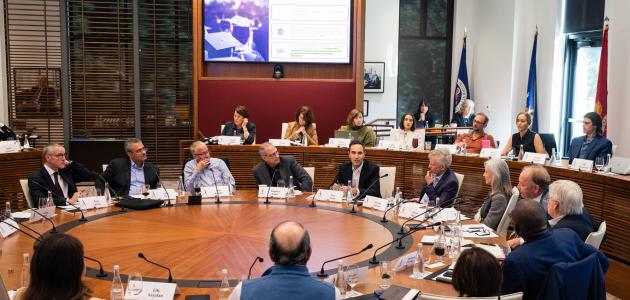Above: General Czesław Kiszczak (first from left) arrives at the airport in Holguín, Cuba
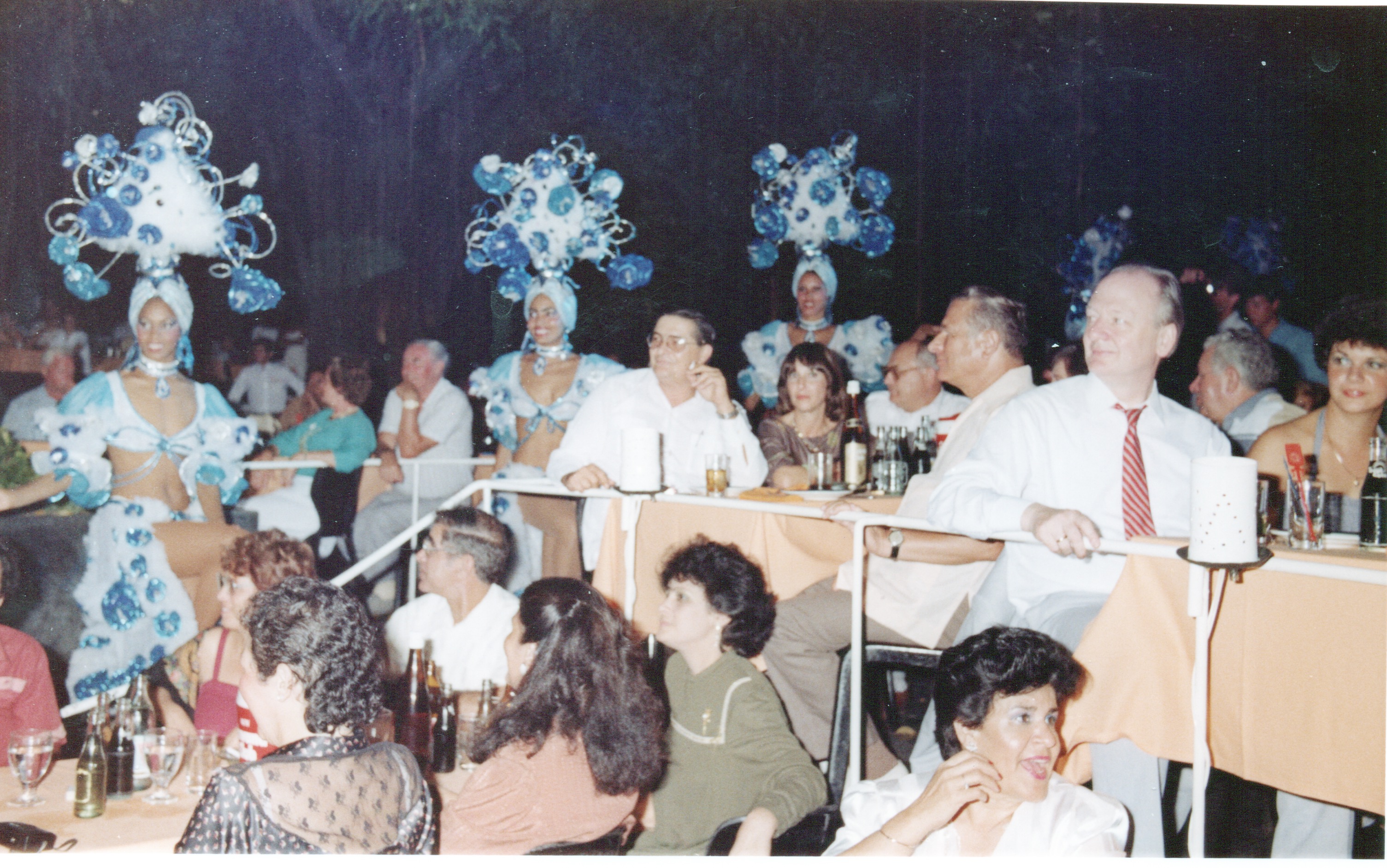
The Hoover Institution Archives has received a large volume of personal papers and photographs from the estate of Czesław Kiszczak (1923–2015), Communist Poland’s last minister of the interior and head of security. Included is an album of photographs documenting Kiszczak’s 1986 visit to Cuba. The album, given to him by his hosts contains vignettes of Cuba’s tourist attractions in the waning years of the Soviet Bloc. The Kiszczak photographs and papers will be processed and made available for research in early 2017.
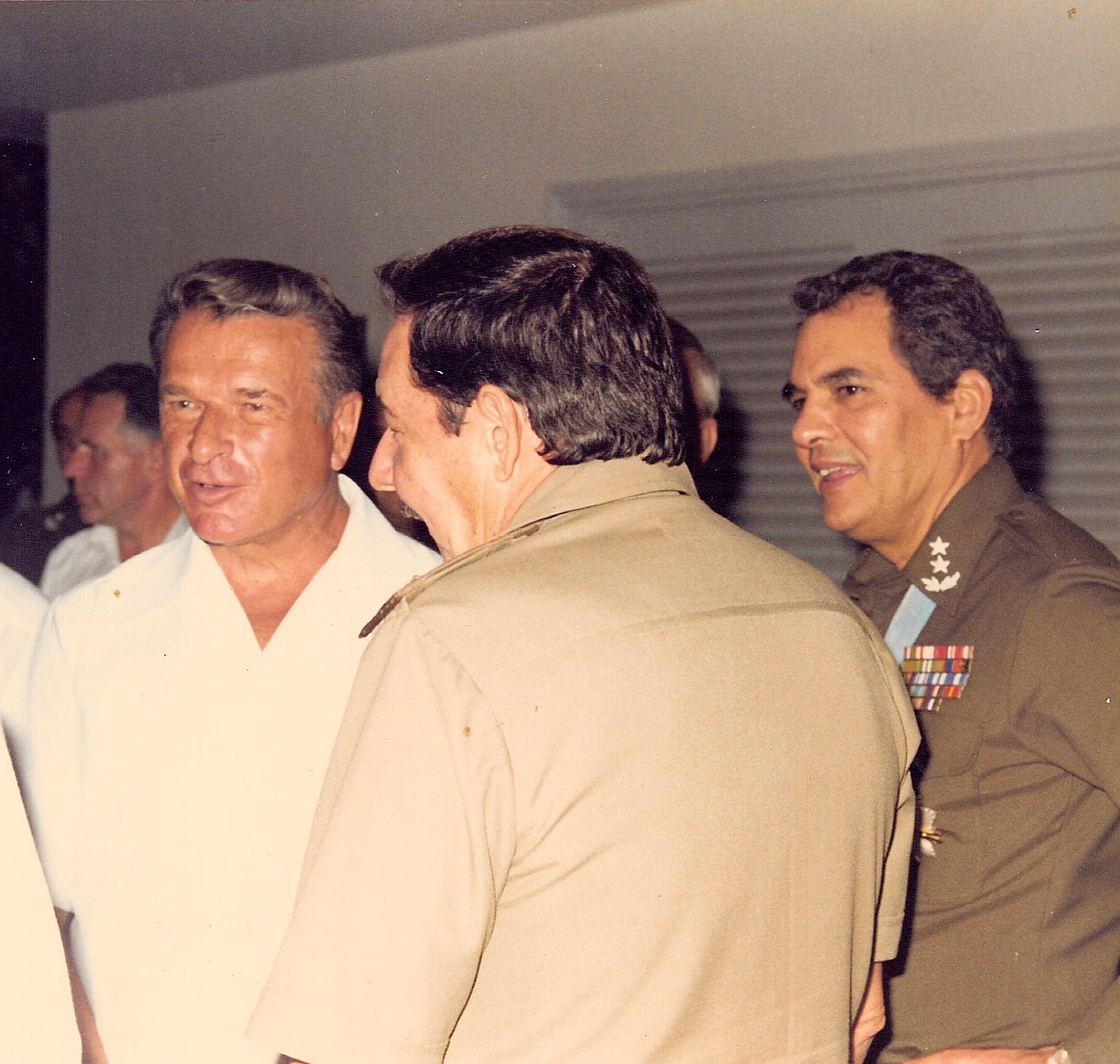
The Polish minister visited the island nation at the invitation of his Cuban counterpart, General José Abrantes. Three years later, Abrantes and six of his aides in the Interior Ministry were arrested, tried for corruption, and sentenced to twenty years. Abrantes died in prison after serving two years. That affair was connected with the earlier arrest and execution of the Angola war hero General Arnaldo Ochoa and three other senior army officers who were accused of involvement in drug trafficking. Evidence exists that the Castro brothers were involved with drug traffickers and that the officers shot or given long sentences were simply following the brothers’ directions. The invitation from the Interior Ministry was simply a formality for Kiszczak had been to Cuba before and in fact was a friend of Raúl Castro. Kiszczak had visited Cuba several times before 1981, when he was the head of Communist Poland’s military intelligence and counterintelligence; he also hosted the younger Castro brother, Cuba’s minister of defense, during his visit to Poland. The collegial relationship stemmed from Poland having trained Cuban military police and counterintelligence officers in a base east of Warsaw. Poland was a major supplier of military hardware to such terrorist states as Syria and Libya, and the international superterrorist Abu Nidal and his family lived for several years in Poland after he was expelled from Iraq in 1983. Nidal’s chief financial office, SAS Trade and Investment, was on the twenty-fifth floor of Warsaw’s Intraco Building. It was closed in 1988, because of intense US pressure, during the time when the near-bankrupt Jaruzelski regime was looking for a way to regain a modicum of international respect and trying to find a way to conduct dialogue with the Solidarity-led opposition. Kiszczak’s visit, though ostensibly official, was mostly that of a trusted old comrade and collaborator in the international communist subversion and terror network, especially as his Latin American voyage included Nicaragua.
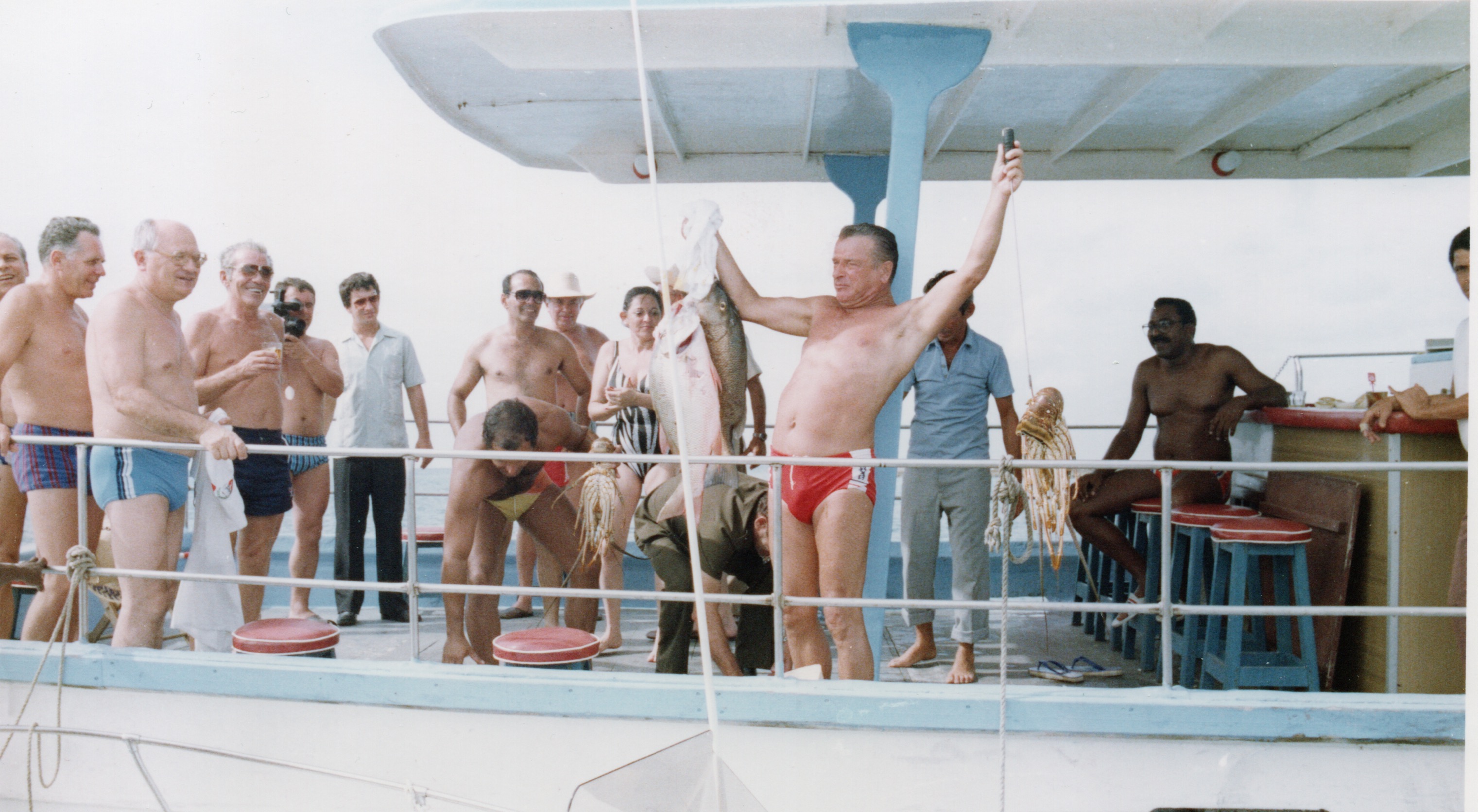
General Kiszczak was greeted by General Abrantes, following which they exchanged high decorations. Then Kiszczak’s old friend Raúl Castro joined them. What did they talk about? There are no records of these conversations in the Kiszczak papers at Hoover and anywhere in Poland. If there was a written record, it was shredded or burned during the archival purging of 1989–90, when Kiszczak was still in charge of the Interior Ministry but about to be replaced by a member of Solidarity. In addition to official receptions, the visit included Cuba’s main tourist attractions: nightclubs, fishing, and hunting.
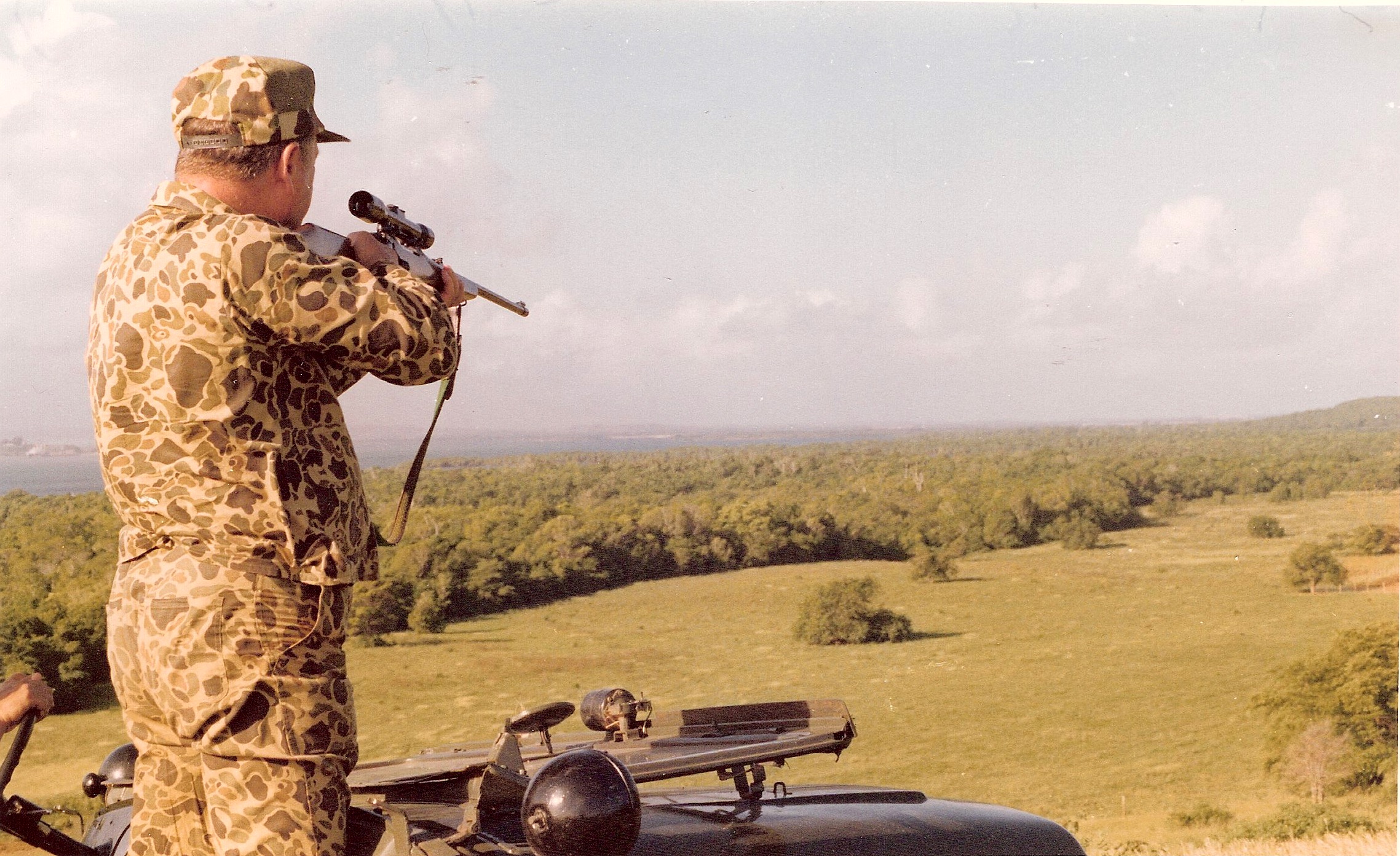
In pre World War II Eastern Europe hunting was the sport and entertainment of the landed gentry and professional elites. When the Communists took over, they eliminated the old elites and made the sport their own. Virtually every Communist leader was a “hunter”: the successive Soviet general secretaries, Hungary’s János Kádár, Yugoslavia’s Marshal Tito, Romanian president Nicolae Ceaușescu, to name a few. Ceaușescu, dubbed the “Bear Slayer,” shot some four hundred Carpathian brown bears during his twenty-five years in power. During one hunt he shot as many as twenty-four of them while sitting in a warm and comfortable blind and having the animals driven and baited near his position. Czesław Kiszczak’s Poland offered trophy stags, wild boar, occasional wolves, but the general yearned for something more exotic. His hosts had the attraction he craved; the private government Cayo Saetía game park near the city of Holguín. Located on a sixteen-square-mile island, the park was teeming with animals brought in from Africa and Asia. Kiszczak told me during one of our meetings about his hunt for the mighty “African Cape buffalo.” Only now that the photos have become available it is obvious that though the General enjoyed killing large animals, his knowledge of zoology was deficient. The “African buffaloes” he slaughtered with such gusto turned out to be ordinary water buffaloes, in other words, domestic Asian cattle!
Maciej Siekierski siekierski@stanford.edu
